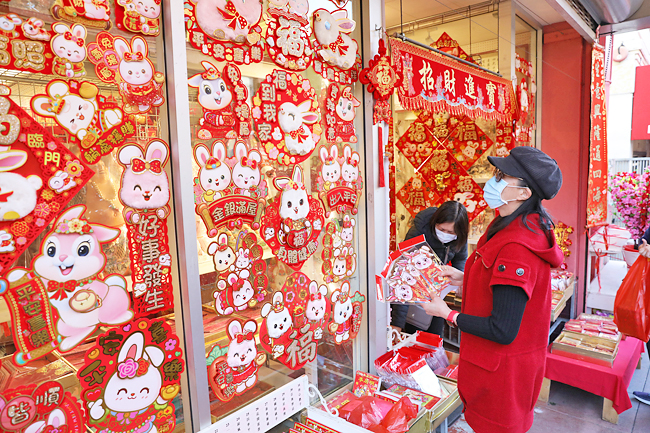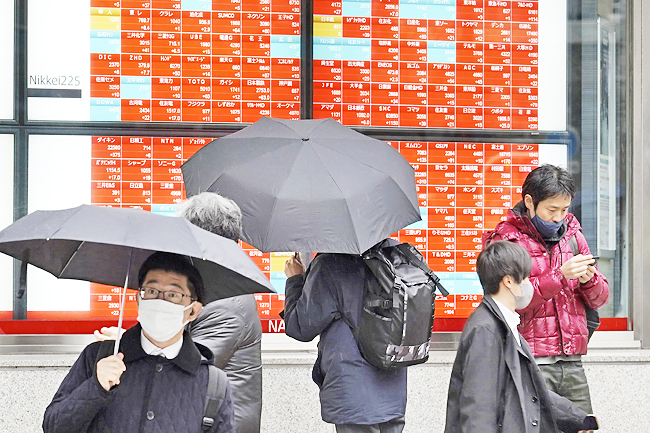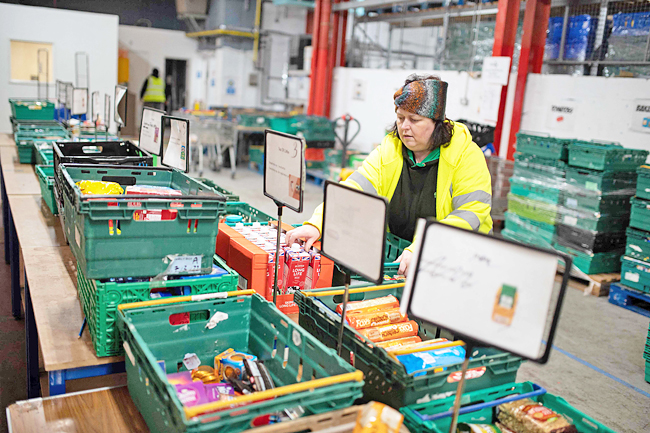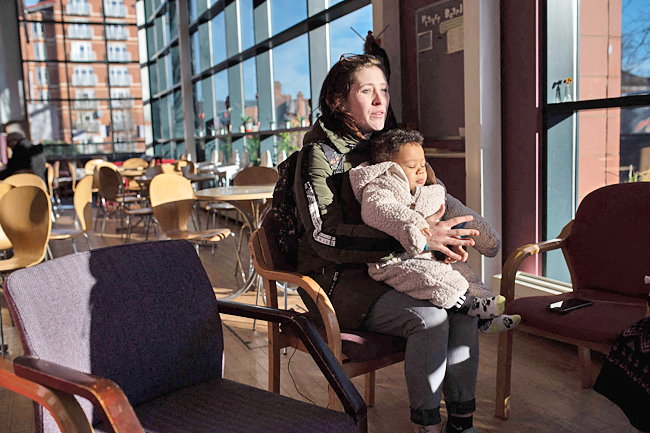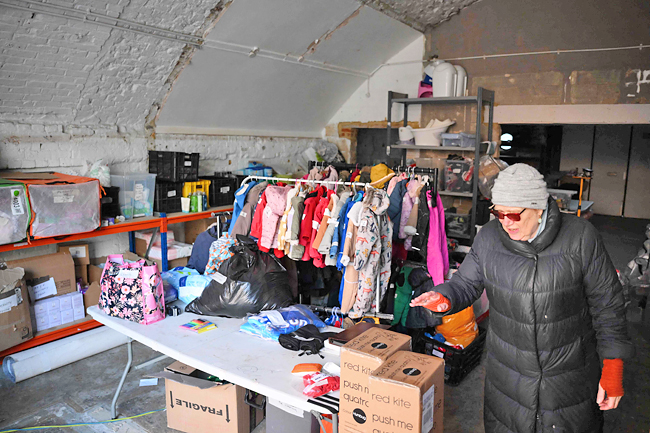Aaron Hutcherson
THE WASHINGTON POST – Korean rice cakes, frequently romanised as tteok (though you might find variations in spelling), are a staple ingredient in the country’s cuisine.
Typically made by steaming and then pounding a simple dough of rice flour, salt and water before rolling into cylinders, rice cakes have a delightfully bouncy, chewy texture. Here’s what you need to know about tteok and how to use them.
Growing up in Korea, cookbook author Emily Kim, better known as Maangchi, would take rice soaked at home to her local mill to be turned into rice cakes.
Now based in New York City, “sometimes you can find it in a Korean grocery store freshly made”, Maangchi said, but you’re more likely to find prepared rice cakes that have been refrigerated or frozen. (Or if you’re looking for a project, you can even make them at home).
“Flavour-wise, it is very much like rice,” chef and cookbook author Hooni Kim said, calling it a blank canvas. However, “the good ones have a touch of nutty, popcorn-y, very, very savoury flavour”, which might be a result of other ingredients used in addition to the base recipe, such as toasted sesame oil used to keep the tteok from sticking while they’re being rolled or a coating of toasted soybean powder.
But instead of rice cakes’ flavour, texture is their prized feature. “When cooked correctly, it’s soft, pillowy, chewy, starchy,” Kim said. “Very fun to chew.”
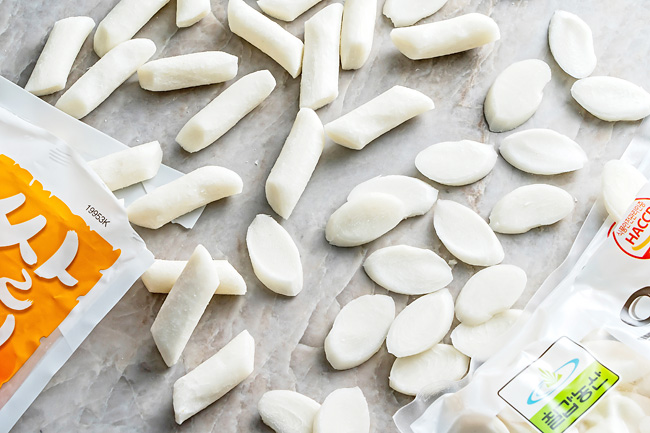

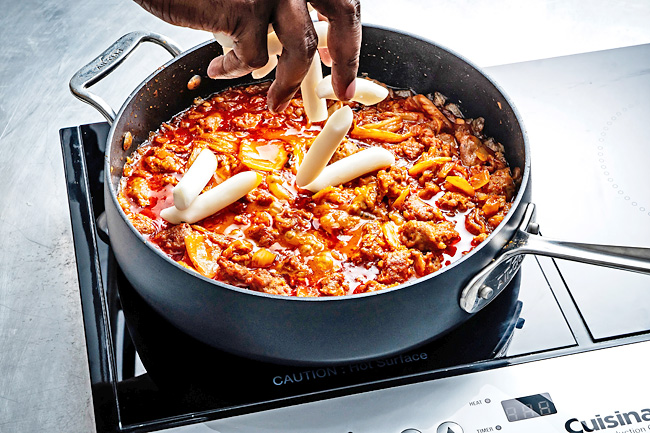
Tteok come in a variety of shapes and sizes and can be composed of different ingredients.
The first thing to note is that while most rice cakes that I’ve encountered are just made from rice flour, they can contain other grains, including wheat flour, so it’s important to check for gluten-free labelling if you have a dietary restriction.
“The way you make these rice cakes are pretty much the same formula, except the size and the shape is going to be different based on what you want to use it for,” Kim said.
Kim said he believes the original form was garaetteok, which are about an inch in diameter and can be up to 12 inches long. This shape seems to be less commonly available, perhaps sold only at Korean grocery stores. If you are able to find them, Maangchi suggests placing them under the broiler until slightly scorched, then dipping them in rice syrup or honey.
One of the most common shapes is called tteokguk-tteok, which roughly translates to “rice cake soup rice cake” according to Kim. This shape is made by thinly slicing garaetteok, usually on the bias, to get oval-shaped coins. These sliced rice cakes, as you can probably infer from the name, are typically used for soup – tteokguk is “the traditional Korean dish for Lunar New Year”, Kim said – but you can also use them in sautes and stir-fries.
The other common shape are thinner cylinders roughly two inches long and about a half-inch thick. These rice cakes are most popularly used in tteokbokki – the Korean street food of rice cakes cooked in a spicy gochujang-based sauce – and sometimes called tteokbokki-tteok.
Rice cakes can be found fresh, refrigerated or frozen from Korean, international and other specialty grocery stores – and even online. (Rice cakes will last for three to four months in the freezer). When shopping for rice cakes, Maangchi suggests avoiding packages with powder on the surface of the cakes. “Don’t buy those because it means they are a little old and dried out, and will crack when you cook them,” she wrote on her website.
When it comes time to cook tteok, the biggest point of consideration is whether they need to be soaked and for how long.
Maangchi and Kim agree that fresh rice cakes do not need to be soaked before using in recipes. For refrigerated or frozen rice cakes, Maangchi suggests a “very short” soaking time because “I don’t know how long the rice cakes were in the freezer or refrigerator”. For her, a quick soak as short as 10 minutes helps speed up the cook time. “Otherwise the rice cakes are dried very hard and you have to cook them a long time to make them smooth,” she said. In addition, soaking removes any excess starch on the surface of the rice cakes, which Maangchi likes to do so that it doesn’t thicken her dish too much.
Kim, on the other hand, soaks vacuum-packed rice cakes overnight and does the same with ones he gets from a rice cake shop if they’ve been sitting around for a while. “When they get really old, it takes a lot longer to hydrate to make soft,” he said. “The drier, not-so-fresh rice cakes, you’re going to have to boil it for a good maybe five, 10 minutes before they soften up.”
However, some of the recipes I found online and in cookbooks made no mention of soaking rice cakes before using them. In my (admittedly very limited) experience, I didn’t find any noticeable difference when I did a quick soak versus using them straight from the package.
But this may come down to specifics with different manufacturers and producers.
“We have two different places where we get it. We definitely know one place is better than the other, and the rice cakes hold in the soup better and become softer faster,” Kim said.
“When they’re out, we have to use somebody else’s rice cakes. And those we don’t even imagine cooking without soaking overnight in water.”
Kim noted how there can be a huge difference in the texture, flavour and ease of cooking of tteok from brand to brand or store to store.
“The not-so-well-made rice cakes, they disintegrate really fast after they soften. The really good ones keep their shape and stay soft.” So once you find rice cakes that you like, it’s a good idea to stick with them if you can. (I found that the ones by Ourhome, with the large red stripe down the middle of the package, disintegrated once softened).
When it comes to cooking with rice cakes, they’re “very versatile’, Kim said. His favourite way to enjoy them is tteokguk – “It’s good any time of the year,” he said – but he also eats them with any sort of leftover stew or chili. “It could replace rice in most dishes, whether it be Asian or not. Noodle dishes, as well.” As such, Maangchi likes to use tteok as the starch to round out her meals. One point of caution is that “you don’t want to put it in anything very mild in flavour, because that would just dilute that flavour even more”, Kim said.
As an easy introduction, you could just boil them until they float and toss with your favourite pasta sauce. Another simple idea is to add them to your favourite soup or instant ramen. If using them in a saute or stir fry, “even without any kind of liquid, if you cook it in really (hot) oil, it will get soft and crispy”, Kim said. If you’ve never tried rice cakes, this is your sign to add them to your pantry inventory to discover the wonder that they are. And soon, you won’t be able to live without them. For Kim, “I feel safe always having some in my freezer”.
KOREAN RICE CAKES (TTEOK) WITH SPICY SAUSAGE AND KIMCHI
I was introduced to Korean rice cakes, aka tteok, at Momofuku Ssam Bar in New York around 2013. I worked in the restaurant group’s corporate office at the time, and the best perk of the job was getting to eat a lot of great food. Of all the dishes I enjoyed during my tenure there, the one that I think about most often was Ssam Bar’s spicy sausage and rice cakes. I fell in love with the bouncy chew of tteok, a texture I hadn’t really encountered before, and loved the layers of spice in the dish and how it was packed with flavour. This recipe is an homage to that.
The restaurant’s recipe is included in the Momofuku cookbook by David Chang and Peter Meehan. “Ma po tofu was their point of departure,” Chang and Meehan wrote of the restaurant’s employees who created the dish, Tien Ho and Tim Maslow. “They melded it with a dish from the first late-night menu – rice cakes with a kinda-sorta-but-not-really Asian Bolognese sauce. The result isn’t Sichuan or Korean or Bolognese or anything, but it is very Momofuku. And banging.”
If you know anything about restaurant cooking, you know that the dishes can be pretty involved. (Letting restaurants prepare complex dishes that I don’t want to make at home is one of the main reasons I love dining out). In keeping with my cooking ethos of simplicity being paramount, I stripped the original recipe down to its essence and added my own interpretation to create the one that I’m sharing with you here.
My version starts with cooking hot Italian sausage until it has surrendered its flavourful fat. Onion and garlic are then sauteed in the rendered fat.
Next, kimchi, gochujang, toasted sesame oil and a little granulated sugar are added to form a quick, deeply flavourful sauce. Lastly, rice cakes are simmered directly in the sauce until tender and chewy, for a one-pot meal.
Serve with packaged fried shallots – which aren’t exactly easy to find but worth hunting down – and sliced scallions to sprinkle on top for an extra jolt of flavour. The result is a quick, comforting meal that tantalises the taste buds.
INGREDIENTS
– Generous one pound refrigerated cylindrical Korean rice cakes (tteok)
– One pound fresh hot Italian sausage, loose or casings removed if necessary
– One medium yellow onion (seven ounces), diced
– Quarter teaspoon fine salt
– Two cloves garlic, minced
– One cup (seven ounces) Napa cabbage kimchi
– One cup water
– Two tablespoons gochujang
– Two tablespoons toasted sesame oil
– Two teaspoons granulated sugar
– Packaged fried shallots, for serving (optional)
– Sliced scallions, for serving (optional)
DIRECTIONS
In a large bowl, add the rice cakes and enough water to cover by one inch and soak for 10 to 15 minutes, then drain (This step is optional).
In a large non-stick saute pan or skillet over medium-high heat, add the sausage and cook, breaking the meat apart with a wooden spoon, until no longer pink, five to seven minutes.
Transfer to a bowl or plate, leaving the fat in the skillet.
Add the onion and salt and cook, stirring regularly, until the onions start to soften and brown, five to seven minutes. Add the garlic and cook, stirring regularly, until fragrant, 30 to 60 seconds.
Add the kimchi, water, gochujang, sesame oil and sugar, stir to combine, and bring to a simmer. Cook, stirring occasionally, for five minutes. Add the rice cakes, stir to combine and cook until the sauce thickens and the rice cakes are tender and heated through but still chewy, three to six minutes. Remove from the heat, spoon into bowls, sprinkle with fried shallots and/or scallions, if using, and serve hot.


